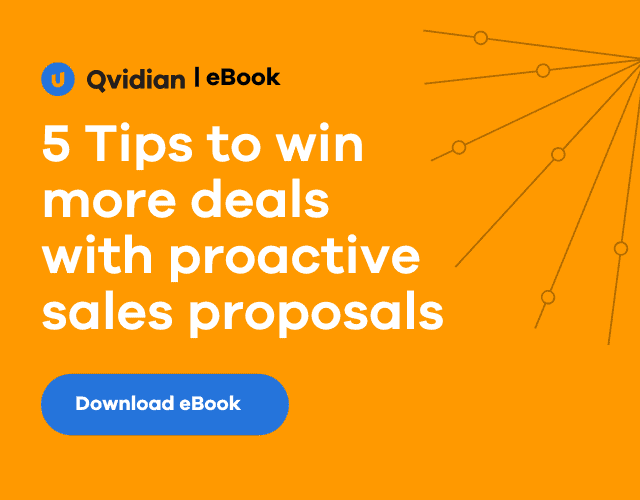Data makes today’s world go round; there’s not much that can’t be distilled into a data point, and there’s not much about a company’s customers and prospects that doesn’t make its way into a CRM system for tracking and more intelligent decision-making. As sales teams get busier and are challenged to do more with less, it’s no wonder that they are seeking out technology that allows them to personalize their approach in the most efficient way possible.
But are they applying that same philosophy to the proposal process?
Data is no stranger to the RFP and proposal process. In fact, according to an Upland Qvidian-conducted survey of proposal and sales professionals from large U.S. companies, 62 percent of respondents use data insights to track the time it took to create proposals and RFPs. Yet many sales teams either underestimate how important data analytics can be to informing decisions at every step of the RFP process, or they focus only on a limited set of data.
According to that same survey, companies that collect proposal data use it to track how long it takes to create proposals and RFPs, determine the number of completed responses, and analyze win/loss data from previous efforts. But data can say more than just “we won 65 percent of our bids this year,” or “we spend a lot of time on RFPs” — it can inform teams what they should be saying in the first place, and how they should be saying it.
But the first question data should answer is whether bidding teams should say anything at all. Look at win/loss ratios: are there any patterns that reveal whether the proposal at hand is worth the time and resources to complete? Smaller companies might feel like they can’t afford not to participate in an RFP – but sometimes spending the time to complete it is costlier than focusing on something more promising. Teams should use past intelligence to personalize this decision for their own companies – is this the kind of deal that we typically win? Using these insights to build an effective bid/no-bid process will deliver material improvements in efficiency.
Data from other winning proposals can help identify the best content. Proposal writers can examine which content features in the highest number of successful bids, like various iterations of product or service differentiation statements, or particular case studies. By using data to judge what kind of content works best in what situations, proposal teams can assemble the strongest possible combination of answers for the situation in which they are bidding.
This also helps busy teams prioritize which content must be kept 100 percent current. One large financial technology company used analytics to identify which content it should consider “most valuable” and therefore regularly review. Its strategy had been to collect and maintain the most content it could over the years, thinking that value lay in volume. But the company had not spent the time to curate that content to determine which iterations created the most successful bids. The results revealed that out of a library of 96,000 content records, 53,000 had been created more than a year prior and had never been used. Moreover, only 4,000 of its records had been used more than five times. By focusing on those 4,000 records, this company reduced its content management workload by more than 90 percent—allowing its teams to focus on making quality decisions for the highest impact.
Personalization is more than making sure the right prospect’s name is on the proposal that you’re submitting. It’s about the data. Sales and proposal teams should think through each scenario and make the data-driven decisions to help them hit on just the right combination of things to say. That way, they can unlock the true sales potential in front of them – and win the right bids.

